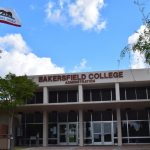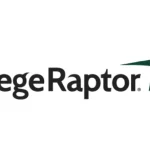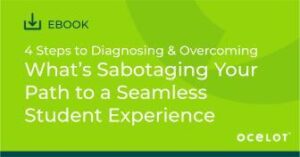The need for accessibility in post-secondary education is evolving. The traditional college student still exists, but non-traditional students are increasing in number.
Adult learners, for example, have much different needs than traditional 18-21 year old students. And first-generation students need more support than those that have family experience with higher education.
Serving all students – regardless of background – is going to be even more critical in the years ahead. Providing a barrier-free academic journey for all is key to ensuring student and institutional success.
Keith Monteverde, Senior Vice President at Ocelot, and Candace Kauffman, Director of AI Conversation Design at Ocelot, recently shared their insights during a panel discussion focused on access and inclusion in higher education. Their insights are part of a six-part mini-series.
This article takes a look at the changing college student. Kauffman speaks to five specific categories of today’s learners: first-generation students, working students, mature students, historically marginalized students, and ESL students. Monteverde focuses on the need to balance staff support with technology to extend that support.
A Wave of Change in Higher Education
Kauffman notes, “I think higher education is in its next wave of change, and there have been great strides to be more inclusive of different populations.” But with a changing population comes the heightened need to adapt processes. Universities should consider the unique needs of five emerging groups:
1. First-generation students
According to the Washington Post, in today’s secondary education environment, there are more “students of color, first-generation students, full-time workers, students from low-income backgrounds, and those who must balance studies with parenting.”
Unfortunately, even though universities are seeing increased enrollment from first-generation students, we’re also seeing that “50 percent of students who start post-secondary studies leave before earning a degree or certificate.”
Kauffman underlines that students who are first-generation miss out on the often “hidden benefits” of having “kitchen conversations” with parents, guardians, and loved ones who have attended school. Many first-generation students are going into their academic journey blind and flailing in frustration.
Combatting this unique challenge means re-evaluating how we approach language and conversations as practitioners. A student’s first exposure to the post-secondary world can turn into a huge barrier to overcome if handled incorrectly. Kauffman encourages solutions focused on highlighting common pain points, like complex enrollment and financial aid forms, and making the overall application and matriculation process easier to understand.
2. Working students
This term doesn’t just include non-traditional students attending school at night. With rising tuition costs, more and more students are balancing work with school. One empathetic solution on the rise is offering increased flexibility. Kauffman encourages faculty members to reconsider their office hours, steering clear from the traditional 9-5 options.
A real-world example of how operating hours limits accessibility is by looking at the U.S. banking system. Many have felt the frustration of either trying to go to the bank during a lunch break or racing to the local branch after work. It’s clear to Kauffman that, “we can’t have the banking model in higher education. We are here to help students.”
This eloquent statement serves as a fresh reminder that higher education is moving away from perceptions of being elitist institutions. With more financial aid and grants allowing more people to pursue higher education, we need to reframe our strategies for ensuring student success.
“We’re in an industry that is about service to others, and so we really need to start rethinking and challenging that model of traditional hours and revamping that to look like our student population.” – Candace Kauffman, Director of AI Conversation Design at Ocelot
3. Mature students
Adult learners come with unique questions and challenges. Many have concerns regarding childcare support or flexibility with dropping classes. The complexity of an adult learner’s day-to-day life creates a barrier even before they step foot on campus or crack open a textbook.
In the past, students with complicated lives outside of their academic journey have been penalized, but as we turn a new page, educators and practitioners are using empathy to appreciate their struggles and eliminate roadblocks.
Answering questions honestly and in simple terms, respecting students’ limited time, and saving adult learners from having the same conversation with five different departments are all ways that can reduce pain points for those balancing their academic journey with other commitments.
4. Historically marginalized students
Kauffman speaks of the double standard this broad group faces. Flowing into secondary education from a non-traditional pipeline shouldn’t affect their support or experiences, but too often it does.
In a chastising and rousing call to action, Kauffman reminds educators that judging a book by its cover is never wise. From her own experience, these students are “ready, they’re capable, and in my experience, bring a level of grit that is amazing.”
5. English as a second, third, (or even fourth) language students
After growing up in a multilingual household, imagine the shock when you reach a post-secondary environment and are frowned upon for your lack of finesse in just one of the many languages you speak.
Students entering university or college with English as a second, third, or fourth language require different considerations with how educators speak to them, their guardians, and their support systems.
Kauffman encourages institutions to be staffed with team members who can converse with students in multiple languages, and be “representative of our populations and understanding” in these conversations. Sensitive topics like financial aid already require assistance without the added language barrier.
An Inclusive Future on the Horizon
Monteverde notes the importance of balancing technology with human support.
Many of the unique pain points experienced by these emerging groups can be mitigated with Ocelot’s technology.
Time has never been more valuable to students, with each hopeful graduate operating on a unique schedule. By providing 24/7 support online, students have an additional tool (offered in multiple languages) to seek support.
When Ocelot’s technology is coupled with inclusive-minded faculty and staff, universities are better positioned to ensure all students succeed.
Excited to learn more about inclusion and accessibility in higher education? Keep reading to learn about why access and inclusion efforts are so hard.
Want a custom tour of how Ocelot’s Chatbot can work for your institution? Get a demo today!














